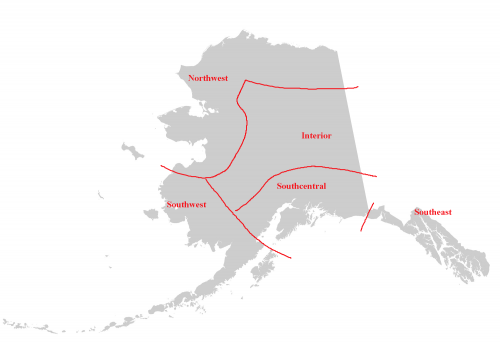Series invites public to explore drought in Alaska
February 9, 2021
Tina Buxbaum
907-474-7812
Recent drought in Southeast Alaska has challenged people living and working in the
region. But drought can affect all of Alaska, with impacts on wildfire, snowpack,
glaciers, agriculture and subsistence resources.
These topics will be discussed starting Feb. 16 in a free seven-part virtual series
hosted by the University of Alaska Fairbanks and the U.S. Department of Agriculture
Northwest Climate Hub.
Register at https://tinyurl.com/AK-Drought to receive the Zoom link, or attend via the International Arctic Research Center
Facebook page.
“Recent years we have seen some quite dramatic precipitation extremes in Southeast
Alaska, both on the dry and wet side,” said Rick Thoman, Alaska climate specialist.
“Is what we are seeing in the recent past indicative of the future?”
Thoman will lead the first discussion on Feb. 16 at noon. He will explore unusually
dry times in Alaska’s past. He will also provide a statewide overview and share tools
for accessing drought and precipitation information.
Thoman is part of the Alaska Center for Climate Assessment and Policy at the UAF International
Arctic Research Center.
David Simeral, a climate scientist with Nevada’s Desert Research Institute, will lead
the second discussion, a review of the U.S. Drought Monitor process, on Feb. 18.
The public is invited to join subsequent listening sessions to share their experiences
of unusually dry times in Alaska. The five sessions will cover Alaska’s northwest,
interior, southwest, southcentral and southeast regions. Participants are encouraged
to bring questions or observations such as:
- During previous droughts, were stream flows so low fish could not pass?
- Did you need to haul drinking water?
- Were trees stressed or killed due to dryness?
- Was there too little water for hydropower?
Participants are welcome to join any and all regional sessions to learn what drought looks like across Alaska and what others have experienced during unusually dry times.

Talks will take place:
- Feb. 16, noon — Climate review: a history of climate extremes, focusing on drought.
- Feb. 18, noon – The U.S. Drought Monitor process: understanding the drought maps.
- Feb. 23, 2 p.m. — What does drought look like in Southeast Alaska?
- March 2, noon — What does drought look like in Southcentral Alaska?
- March 9, noon — What does drought look like in the Aleutian islands and Southwest Alaska?
- March 16, noon — What does drought look like in Interior Alaska?
- March 23, noon — What does drought look like in Northwest Alaska?
Information shared in the listening sessions will inform an in-person drought preparation workshop after the COVID-19 danger subsides.
The events are co-hosted by the Alaska Center for Climate Assessment and Policy, the U.S. Department of Agriculture Northwest Climate Hub, the U.S. Department of the Interior Alaska Climate Adaptation Science Center, and the Federal Reserve Bank of San Francisco.


